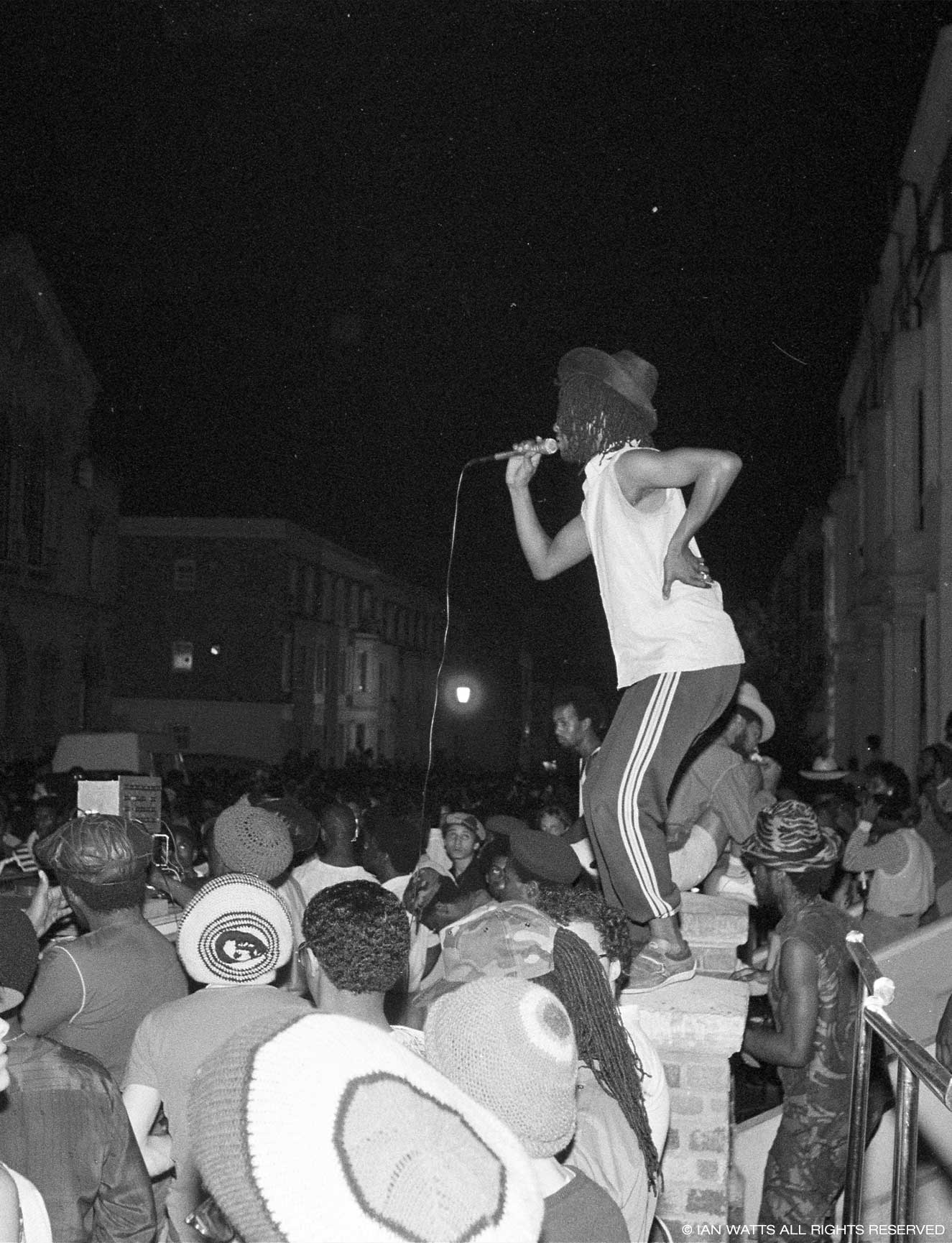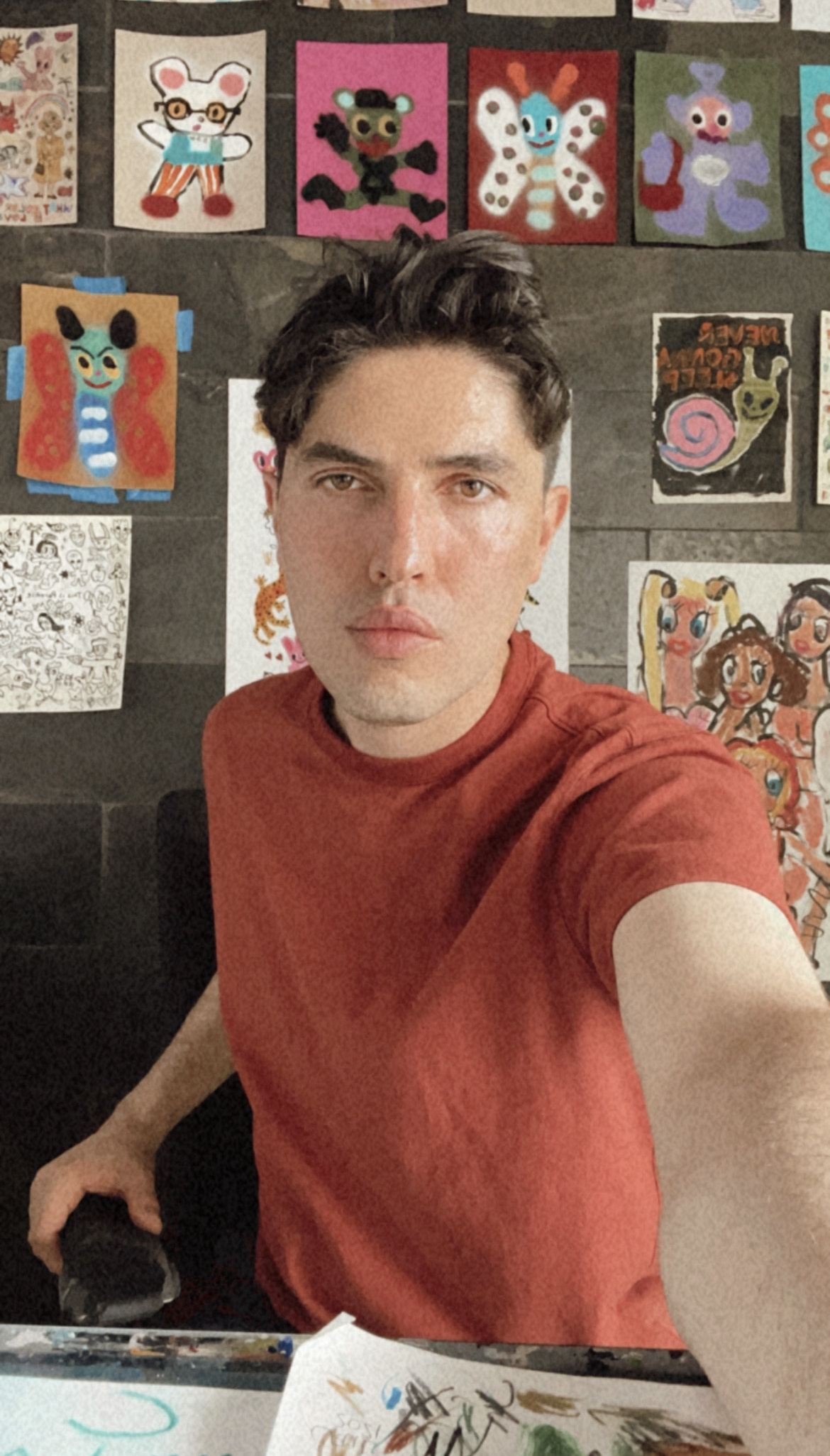You managed to carve out a remarkable place in Australia’s political landscape at a very young age, including being voted Indigenous Youth Prime Minister of Australia. Do you think of yourself as an activist?
Aretha Brown: I think very early on I was definitely more politically active, in the more obvious sense of going to rallies and speaking and being involved in youth parliament. But now for me my art is my own political weapon. I’m just telling my story at the end of the day, and for some people that’s perceived as political, but in a lot of ways it actually really isn’t. It’s just me as a young Indigenous person talking about my story and working with women in my art collective. It’s political, but it’s also not. So I guess in some sense I’m an activist, but at the same time I’m just doing what I love and making art. I think all Indigenous people are activists if I’m being honest.
People think my work is always really political
And how was it balancing still growing up, with arguably being considered a ‘role model’ for young activists?
AB: Yeah like I said, I think at the moment I’m trying to break away from expectations, and what people expect of me as an Aboriginal artist. People have a lot of expectations around that. People think my work is always really political, and it’s really serious, that I’m a really serious person, and that my stories are kind of ‘tragic’ as an Indigenous person. There’s this perception that I am supposed to paint certain things and say and think certain things, but I’m just being myself and doing what’s authentic to me and my own art. The expectations are really hard to deal with when people want you to be a certain kind of artist, and so I’m trying to break away from them.
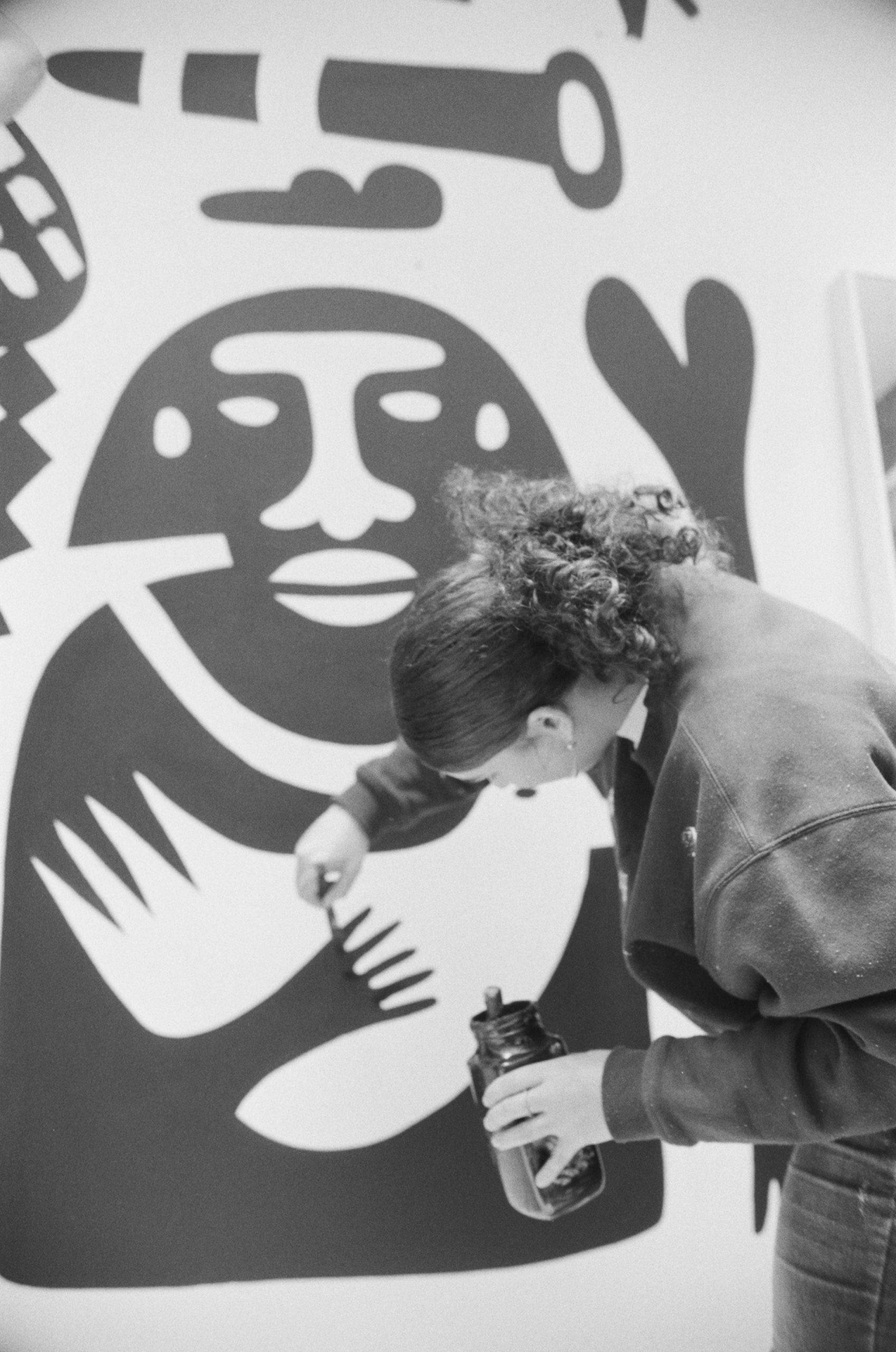
You moved to London very recently. What prompted that move? How does it feel to be in such a new context?
AB: Yes I’ve only been in London about a month now, so pretty fresh off the plane. I don’t know if you know much about our lockdowns, but Australia had some of the craziest lockdowns in the entire world. And I think you’ll find that there’s a lot of young Australians that have moved overseas, the second that borders opened, just because we were all feeling a bit claustrophobic. I understand why we had to do lockdowns, I’m not I’m not anti-lockdown or anything, but I think I just got to a point where I was thinking, “I just need to get out, and just be 21!”
It maybe also ties a little to what you’ve been saying about wanting to move away from being pigeon holed in what your art represents?
AB: Definitely. I think what I like about London so far is that nobody knows me here, which has honestly been pretty great. There’s not this expectation of me to paint in a particular way, because no one really knows what Aboriginal art is, or looks like, unless you’re really into it, as it’s a pretty niche thing. And I feel I have a lot of freedom now, especially in the sense that Australia is so small, and in the arts community everyone knows each other. Here there’s more anonymity.
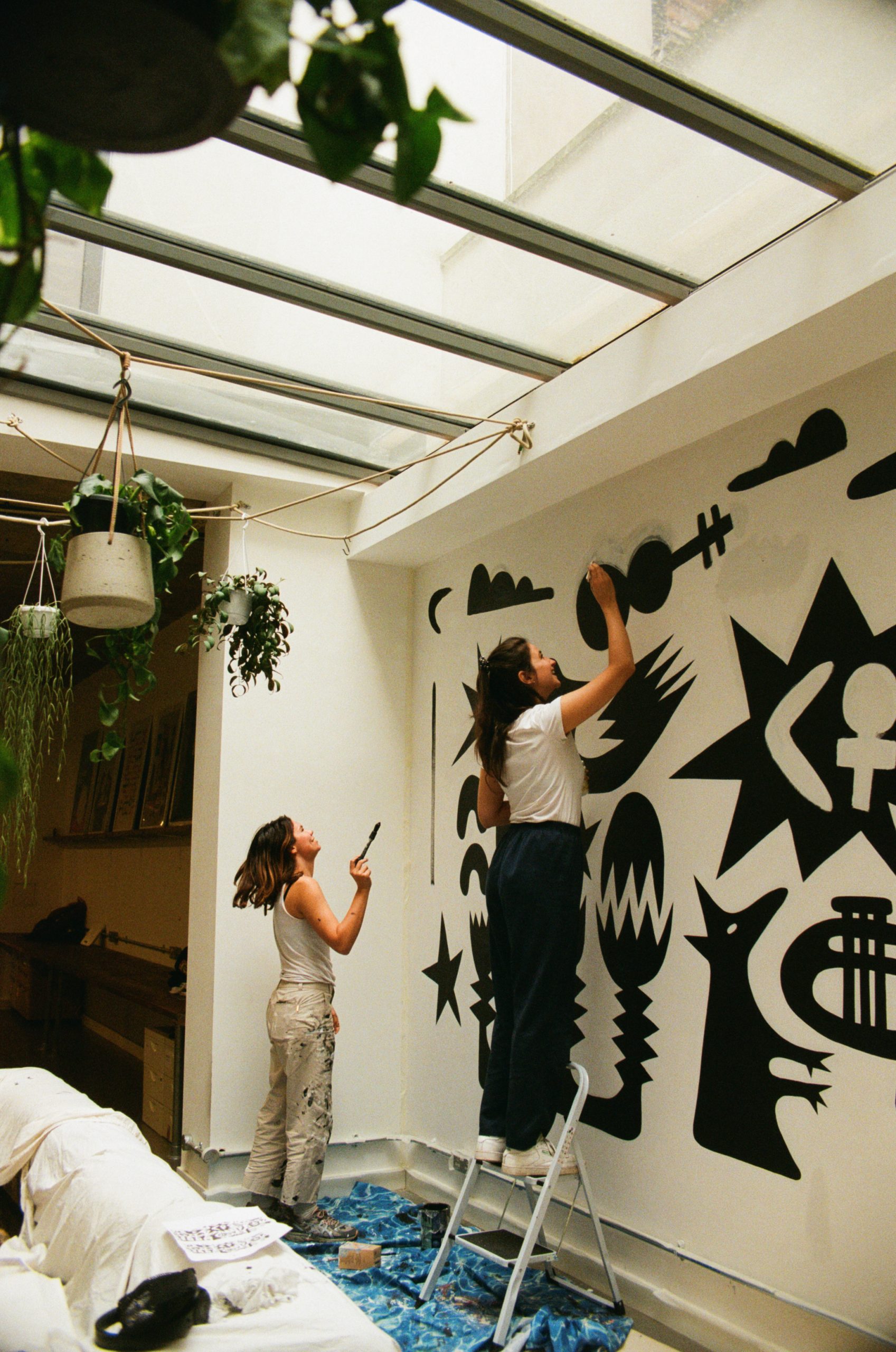
Your mum is an artist and your dad is a musician. Was childhood a creative space for you?
For sure. It would have been weird if I’d turned out as a lawyer or something like that. I think I was always going to go down a creative path. And I feel very very lucky to have grown up in a pretty creative home, as not a lot of people do.
I want to produce work that’s public
What’s your earliest memory of making art?
I remember painting in the backyard in the summer, and I wore these little overalls, even from when I was little I was just painting all the time. I remember, my dad has glasses because he’s really blind, and in all my paintings when I was little if you look back, every single thing in the painting has glasses on; the trees, the cat, the animals, the houses, because my dad was my only creative reference for what the world is like.
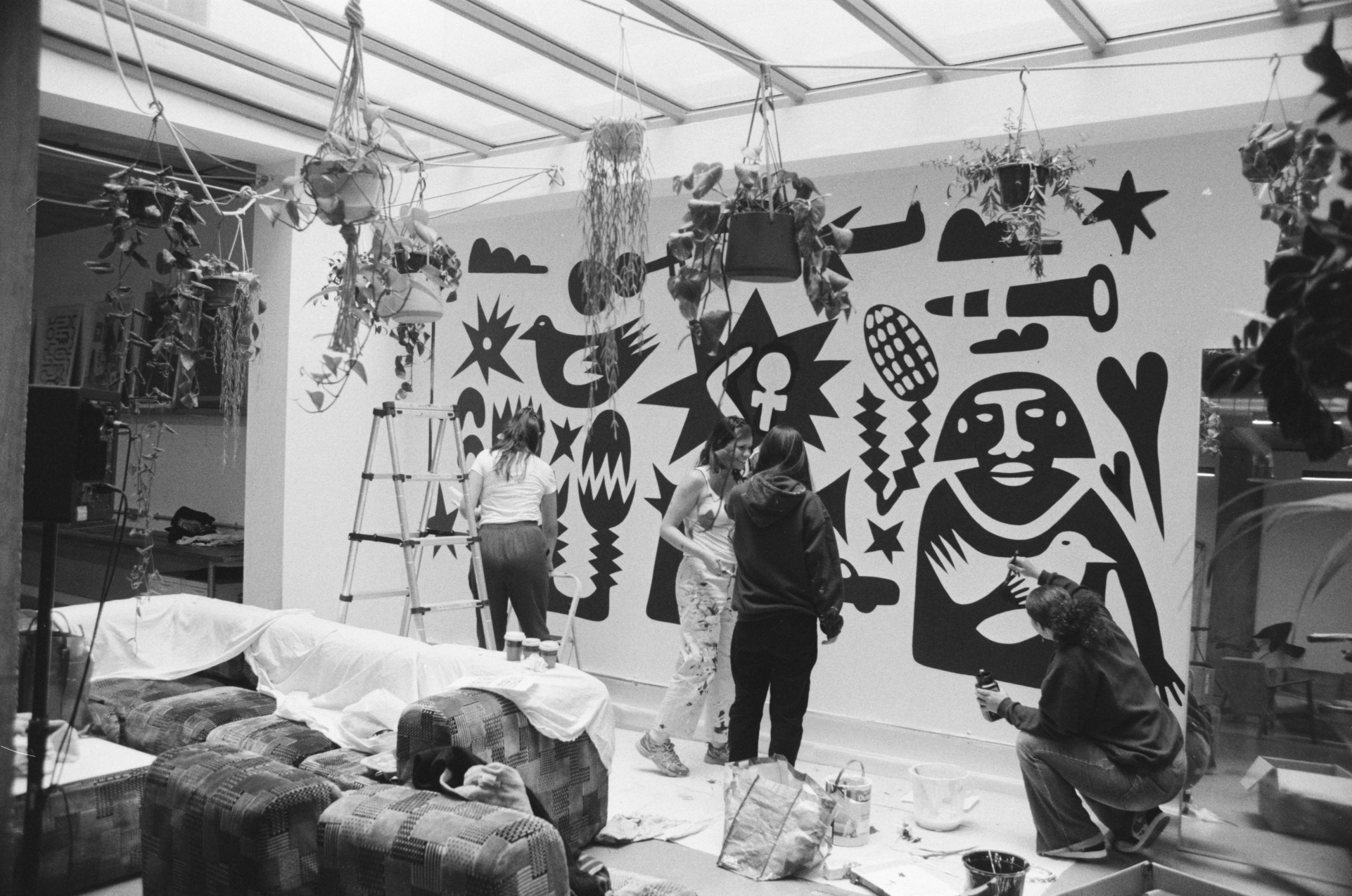
And how did you start creating murals? What was your first major mural piece?
AB: My first mural piece that I actually applied for was for Footscray station. Footscray is an area in Melbourne that’s actually very similar to Dalston in a lot of ways. It’s an unpolished area, but very charming, multicultural, and with a really lovely sense of community. So it was Footscray station, on this big shipping container, and I actually had to go live in Geelong, which is this tiny little town, while I worked on it. It took a few weeks, which for me looking back is crazy because usually we can bang out a mural in a few days now, because we’ve gotten so efficient with my team. I’ll be honest, I kind of don’t like looking back at it, I wish I could change this or that, and it’s so public for how early it was.
It’s just fun to go really big
What do you think drew you to murals over similar forms like creating a painting?
AB: I think part of it is I just really don’t like canvas, sometimes I’ll see a great painting on a terrible canvas, and I just think, “Oh God!” and canvases can get warped too. I don’t like that someone can privately own a little bit of the art either, people will buy artwork and put it in their bedrooms and they’ll be the only person to ever see it. Which is in some ways is cute, it’s very intimate, but I think I want to produce work that’s more public than that. Even if someone commissions a mural, they don’t really own it, and that to me is very cool.
It’s also just fun to go really big. If you work on canvases you’re stuck in a little studio by yourself, and it’s quite lonely. But to work on a mural, you have to get helpers, you have to get a team around you, and you get to talk and interact with the public somewhat, just because it’s a bit of a spectacle. Having everyone around, and music going, and talking and people stopping and asking questions. I would get crazy lonely stuck in a studio making a painting.
How do you prepare for making a mural?
AB: It depends. Sometimes clients will want a really clear plan and sometimes it’s more you can do whatever you want. So it really does change, and both have their pros and cons.
Even when I do plan, if there’s a really specific idea in mind, it will always end up changing a little bit anyway. When you’re making something on a small scale, and then applying that to a space, things will always change.
The one I’ve just done for Everpress, for instance, there’s so many things that we actually changed at the last minute. That’s just because once you’re in a space, you can kind of see what you need, or that plant actually hides that bit of the work, so let’s just move that across a little, and maybe put this thing in. It’s about really thinking about the work in the environment, and it will always change.

Would you say you’re a perfectionist?
AB: Definitely. To my detriment sometimes. I think because my work is arguably quite simple really, it’s just big bold shapes. I always feel you can keep stuff simple like that, but it has to be done to absolute perfection. The best compliment that I can get is when someone says, “Oh, it’s like vinyl stickers that you put on the wall because it’s just painted so crisp.” With my art collective, I have a team of all-women painters that come and help me in each work, and that’s what they help me do. I’ll do the big design and then they will clean the lines, and the cleaning of the lines to me is the most important part, because that’s what makes it work. So yeah, you can have really simple works, but it just has to be so crisp. I think that’s where my perfectionism really comes out.

What’s it like working with an all-female crew?
AB: I only hire women on my site, and people think it’s a political decision, but it’s not really. You would never walk past a group of male builders on a site and think, “Oh, wow, that’s a political statement that they’re making by only hiring men.” I just prefer to work with women, and women are underrepresented in terms of street art as well. People always walk in and say, “You guys are like a feminist art crew.” And we all are feminists, and would all happily describe ourselves as so, but it’s not really that political. It’s just young women coming together and painting and having a laugh and teaching each other about our cultures. I don’t think it’s that radical.
It’s like a therapy wall
I always say that the wall, it’s like a therapy wall. As soon as you start painting, and we’re all there together, it just all comes out. My dream, maybe on my next mural, is to make an audio recording of some of the conversations we have as we’re painting. Because it ranges from us bitching about who we are dating, to exes and boys and girls, to government sanctions in the Ukraine, there’s no in between.
I just have all these women that I work with are just so amazing as artists in their own right, and are so smart. And I think the conversations we’re having are brilliant and vital. We’re talking about the problems with art schools, being artists, being female artists, being street artists, and to me these great conversations are what the work is about. The wall brings it out.
I think that’s a really interesting point, about the process being as important as the final mural.
AB: I think it’s really important to showcase the other people that have helped me make the mural possible. In the past I’ve worked on murals, and there’d interviews saying things like, “Aretha Brown’s mural, Aretha Brown!” but in reality there’ll be six or seven women that have helped me. And it just felt so wrong. Like, yes it is my design, but women do so much kind of labour in the background that doesn’t get any recognition.
I just prefer to work with women
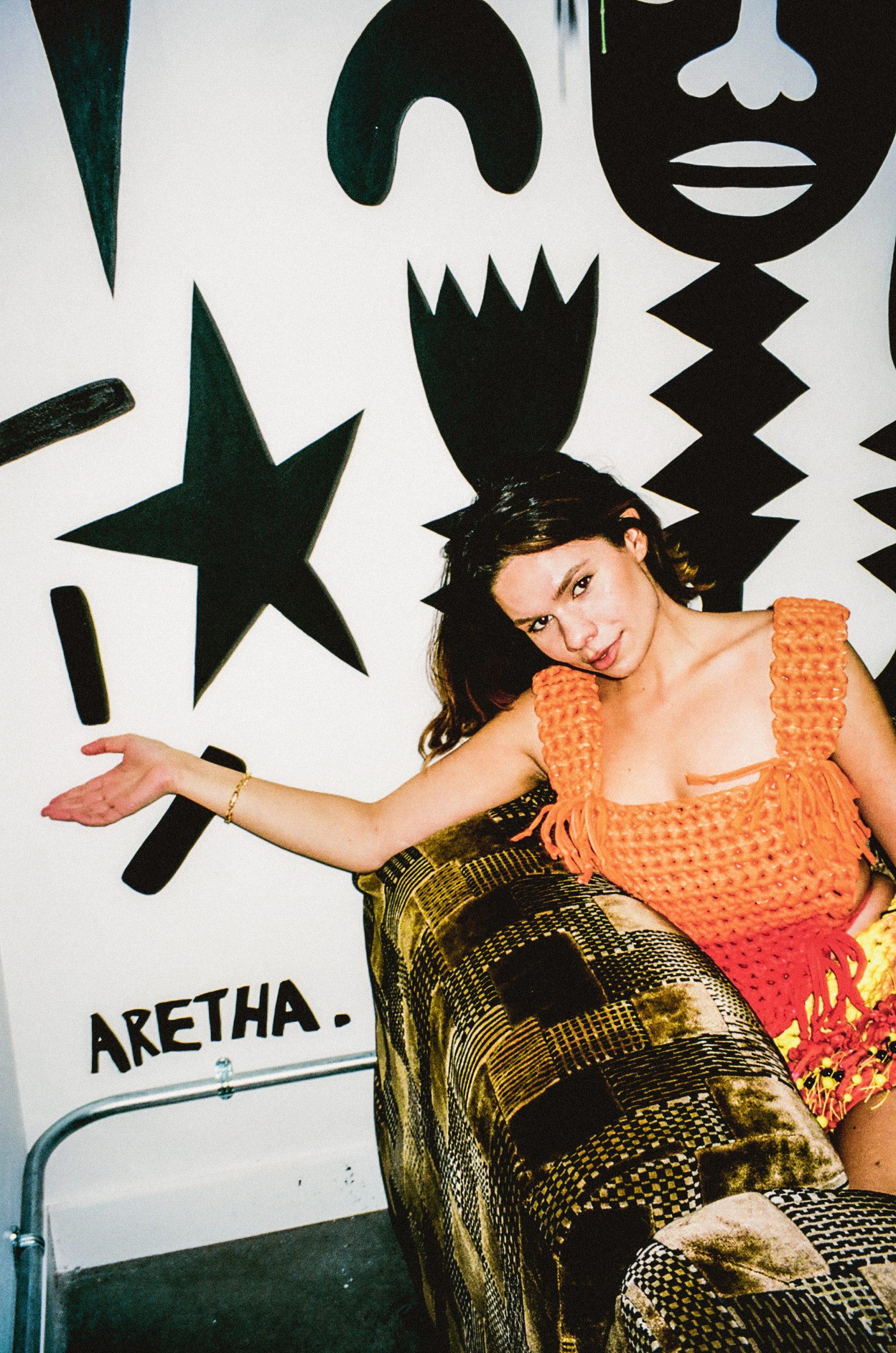
What gives you hope?
Working with other young women – and I keep saying women but of course I mean women and non-binary people, all femme folk – is amazing. It just gives me so much hope. There’s just so many untapped, amazing female artists that are out there, and I’m privileged to have had some of them come and help me work on my murals.
Something I always tell them is just to go bigger. It’s such a metaphor, but a lot of female artists will go smaller with their work, pieces will get smaller and smaller as they go along. I say go big on the next work, do a wall and just go bigger, bigger, bigger. It is quite masculine in that sense, to kind of really take up space, but that’s what it’s all about.
Read More: Who Gets To Be A Creative?




